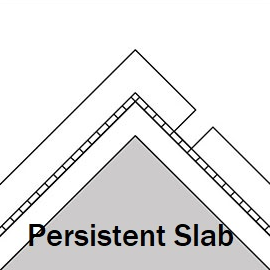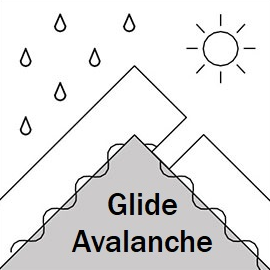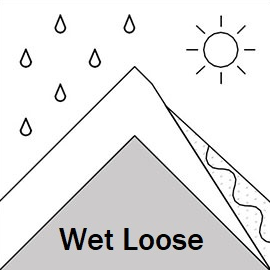Gudauri
Natural avalanches are unlikely, human-triggered avalanches are possible. Small avalanches in specific areas, or large avalanches in isolated areas.
We are now in the middle of a hot and sunny period that is about to end on Thursday evening with clouds startng to settle in before precipitation starts late Friday. Wet avalanches on sunny aspects are still a concern at all elevations as high as 3000 m during mid-day heat, and slab avalanches on a persistent weak layer on shady aspects in the high alpine are still possible.
Forecast issued at: 2 April 2024 22:00
Forecast valid until: 4 April 2024 22:00
Forecaster: Petr Zherdev
High Alpine
> 2600m
2 Moderate
Heightened avalanche conditions on specific terrain features. Evaluate snow and terrain carefully; identify features of concern.
Alpine
2000m - 2600m
2 Moderate
Heightened avalanche conditions on specific terrain features. Evaluate snow and terrain carefully; identify features of concern.
Sub Alpine
< 2000m
2 Moderate
Heightened avalanche conditions on specific terrain features. Evaluate snow and terrain carefully; identify features of concern.
Avalanche Problems
Persistent Slab

Crusts with weak, sugary snow above and below them have been seen in the upper and mid snowpack (below the 22.03-25.03 new snow layers). These layers have caused recent large avalanches. A large slab avalanche could be started by a smaller surface avalanche, a heavy load, or by a rider hitting the 'sweet spot' (often an area where the overlying slab is thinner). These problems remain in the high alpine and on shaded slopes in the alpine and in areas where the snowpack is shallower. Warm temperatures will eventually stabilise these layers but they might become more active for a while first - treat steep slopes with caution!
| Sensitivity | The specific avalanche problem type is difficult to trigger with a human rider. |
| Distribution | Specific areas, with common characteristics. Evidence for instabilities exists, but it is not obvious and finding it requires careful observations. |
| Time of Day | All day |
| Trend | Improving |
| Confidence | Moderate |
Glide

Such avalanches are now present even as high as 2900 m and are becoming more and more widespread, These are unlikely to be triggered by a rider and often happen naturally so should be taken into consideration while traversing areas below the spots where such avalanches might occur - steeper slopes with grassy or smooth rock underlying surface and slopes where the glide cracks are visible.
| Sensitivity | The specific avalanche problem type is difficult to trigger with a human rider. |
| Distribution | Many locations. Evidence for instabilities is frequently found, in many locations. |
| Time of Day | Afternoon |
| Trend | Deteriorating |
| Confidence | Moderate |
Loose Wet

A combination of a high freezing level, sun and still possible areas of cloud creating a greenhouse effect will make loose snow avalanches likely in steep areas. These slides may also be the trigger for a larger slab avalanche on slopes below. Stay away from steep areas if you see evidence of snow movement, and when the snow is unsupportive, wet and sticky.
| Sensitivity | The specific avalanche problem type is reactive to human rider triggers. Easy to trigger with ski cut. |
| Distribution | Specific areas, with common characteristics. Evidence for instabilities exists, but it is not obvious and finding it requires careful observations. |
| Time of Day | Afternoon |
| Trend | Deteriorating |
| Confidence | Moderate |
Recent Avalanches and Snowpack
Recent avalanche activity:
Multiple glide and loose wet avalanches on all elevations on sunny aspects (E, S and W) with size up to 3. Glide avalanches are more likely in warm weather but can release at any time - if you see cracks in the snow, do not stop under these areas!
02 April - an older size 2 slab avalanche on N slope of Dedaena bowl at 2600 (possibly snowmobile triggered)
31 March - glide slab avalanches on E slopes in Kobi valley at around 2900
28 March - two size 1.5-2 slab avalanches on Bidara E face at 2900 m. (at least one possibly triggered from a distance of 50-100 m. by a snowmobile)
27 March - multiple size 2 windslabs seen on Lomisa - Miketi ridge E and NE, 2000 - 2900 m, some involved deeper layers.
26 March - multiple large slabs on Sadzele W and NW aspects 2900 - 3200 m, triggered by expolsives - including three size 3 slides.
25 March - Multiple size 3 slabs, N aspect along the ridge E of Arakhveti on or near Mujukhi.
Snowpack:
Current warmer period with daily melt-freeze cycles possibly contributed to stabilisation of the existing weak layers (still to be confirmed) and formed widespread crusts on top of the snowpack. Ongoing heat, however, led to widespread wet avalanches. Snowpack might be becoming isothermal on lower elevations.
Weather
Clear on 03rd of April with no precipitation or significant winds are forecasted. Air temperature as high as 8C at 2000 (and 1.5C at 3000) on 3rd of April with freezing level rising up to 3000 m. mid-day. Then temperature will drop to around 0-2C in the afternoon on 4th of April at 2000 m. with some clouds rolling in.
Disclaimer
Our avalanche forecasters are internationally qualified and experienced professionals, and data is provided by skilled observers. We encourage you to make your own observations and decisions, without relying solely on our forecast, since any forecast is a generalised 'best guess', and in certain cases it might be inaccurate. We can not be held liable for any actions you take in the backcountry that may result in injury, loss or death.